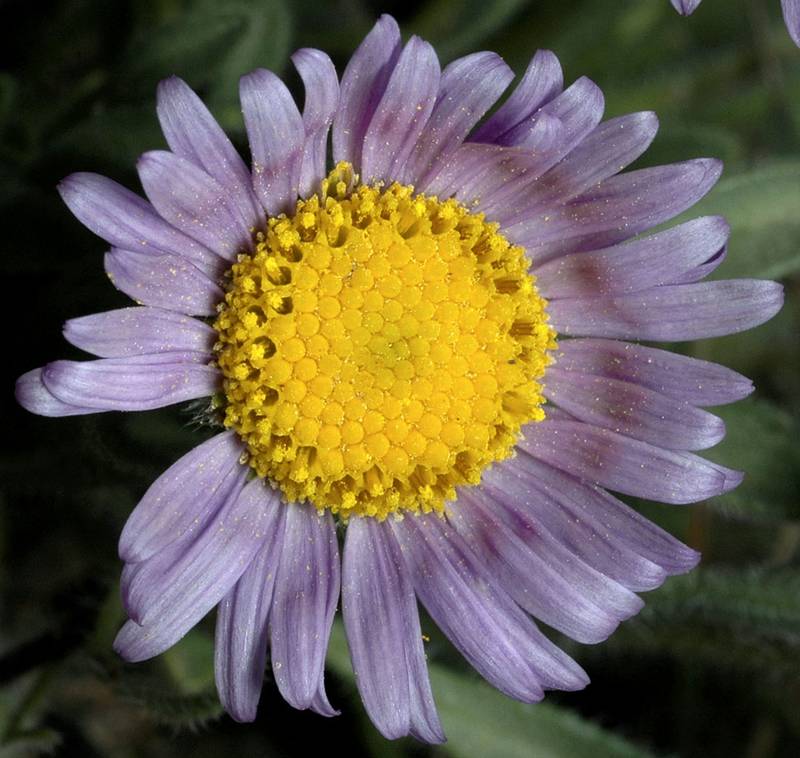|
hairy-seeded daisy, cushion fleabane
|
foothill fleabane, longleaf fleabane
|
| Taprooted perennial with short-branched, woody base; stems to 15 cm. high; plants more or less spreading-hairy and glandular throughout. |
Perennial with a tap-root, 1-5 dm. tall, sub-erect, generally purplish at the base, the herbage covered densely with short, spreading hairs. |
Basal leaves linear-oblanceolate to spatulate, up to 8 cm. long and 12 mm. wide, the cauline leaves reduced. |
Basal leaves triple-nerved, elongate, acute, tapering gradually below, up to 25 cm. long including the petiole, and 1 cm. wide; cauline leaves reduced. |
Heads solitary, hemispheric, the disk 9-20 mm. wide; involucre 5-9 mm. high; rays 15-45, pale pink or purple to deep violet, 4-15 mm. long and 1.3-3.6 mm. wide; pappus of 20-30 capillary bristles. |
Heads 1-16 in an open inflorescence; involucres 5-7 mm. high, grey-hairy, its bracts somewhat imbricate; rays 35-65, pistillate, deep blue or occasionally pink, 7-13 mm. long; pappus double, the inner of 20-30 bristles. |
Achenes densely covered with long, silky hairs. |
|
|
|
|
|
| April-June |
June-August |
| Dry, open, typically rocky areas, often with sagebrush. |
Open, usually dry places, often among sagebrush. |
Occurring east of the Cascades crest in Washington; British Columbia to Oregon, east to western Idaho.
|
Occurring east of the Cascades crest in Washington; southern British Columbia to eastern Oregon, east to Montana, Wyoming, and Utah.
|
| Native |
Native |
| Not of concern |
Not of concern |
E. acris, E. aliceae, E. annuus, E. aureus, E. basalticus, E. bloomeri, E. caespitosus, E. chrysopsidis, E. compositus, E. corymbosus, E. davisii, E. disparipilus, E. divergens, E. eatonii, E. elatus, E. filifolius, E. flettii, E. glacialis, E. howellii, E. inornatus, E. karvinskianus, E. leibergii, E. linearis, E. lonchophyllus, E. nivalis, E. oreganus, E. peregrinus, E. philadelphicus, E. piperianus, E. pumilus, E. salishii, E. speciosus, E. strigosus, E. subtrinervis |
E. acris, E. aliceae, E. annuus, E. aureus, E. basalticus, E. bloomeri, E. caespitosus, E. chrysopsidis, E. compositus, E. davisii, E. disparipilus, E. divergens, E. eatonii, E. elatus, E. filifolius, E. flettii, E. glacialis, E. howellii, E. inornatus, E. karvinskianus, E. leibergii, E. linearis, E. lonchophyllus, E. nivalis, E. oreganus, E. peregrinus, E. philadelphicus, E. piperianus, E. poliospermus, E. pumilus, E. salishii, E. speciosus, E. strigosus, E. subtrinervis |
|
|
| |
BC,
OR,
WA
Flora NW,
PNW Herbaria
WildflowerSearch
iNaturalist (observations)
USDA Plants Database



